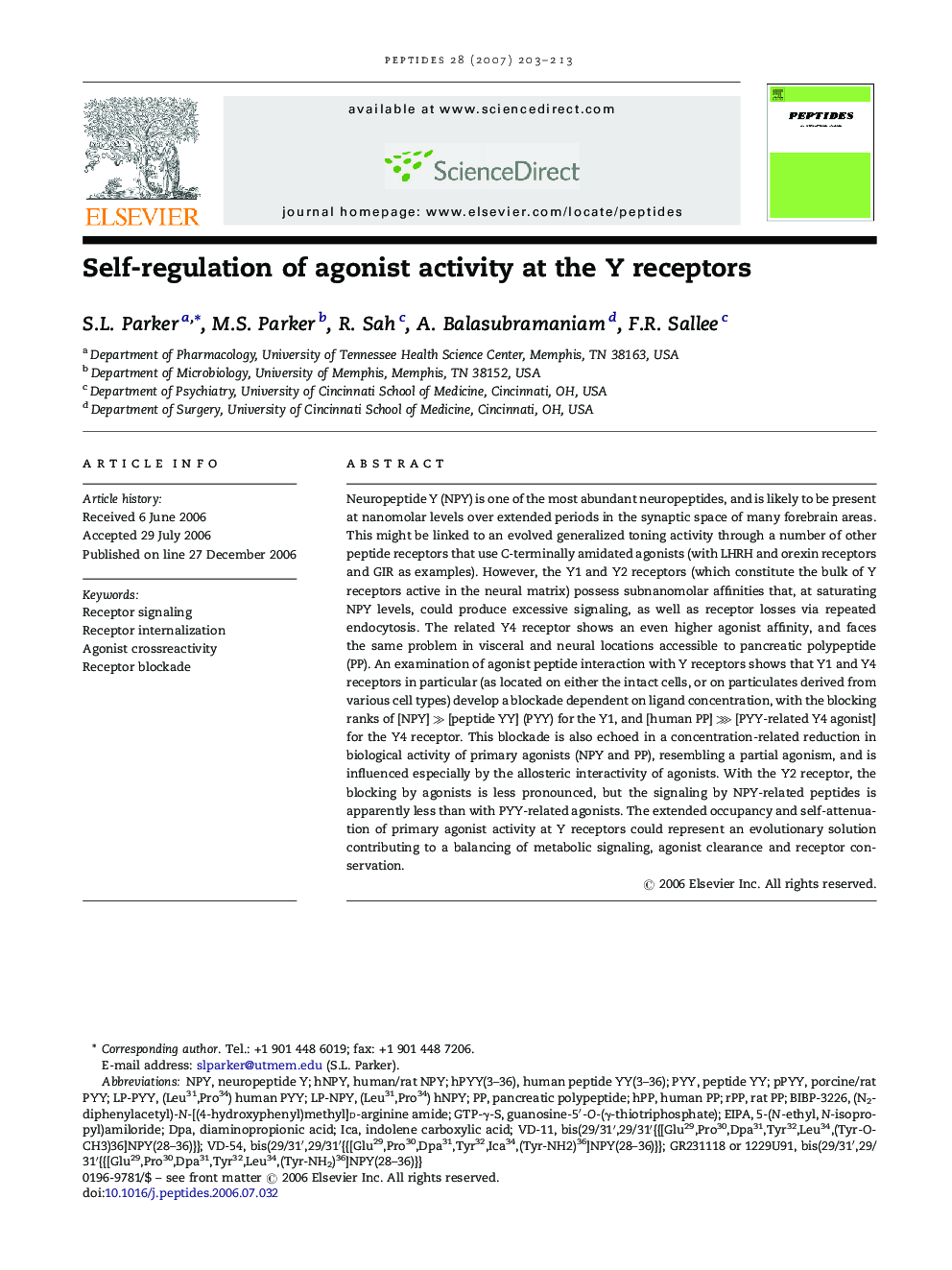| Article ID | Journal | Published Year | Pages | File Type |
|---|---|---|---|---|
| 2007726 | Peptides | 2007 | 11 Pages |
Neuropeptide Y (NPY) is one of the most abundant neuropeptides, and is likely to be present at nanomolar levels over extended periods in the synaptic space of many forebrain areas. This might be linked to an evolved generalized toning activity through a number of other peptide receptors that use C-terminally amidated agonists (with LHRH and orexin receptors and GIR as examples). However, the Y1 and Y2 receptors (which constitute the bulk of Y receptors active in the neural matrix) possess subnanomolar affinities that, at saturating NPY levels, could produce excessive signaling, as well as receptor losses via repeated endocytosis. The related Y4 receptor shows an even higher agonist affinity, and faces the same problem in visceral and neural locations accessible to pancreatic polypeptide (PP). An examination of agonist peptide interaction with Y receptors shows that Y1 and Y4 receptors in particular (as located on either the intact cells, or on particulates derived from various cell types) develop a blockade dependent on ligand concentration, with the blocking ranks of [NPY] ≫ [peptide YY] (PYY) for the Y1, and [human PP] ⋙ [PYY-related Y4 agonist] for the Y4 receptor. This blockade is also echoed in a concentration-related reduction in biological activity of primary agonists (NPY and PP), resembling a partial agonism, and is influenced especially by the allosteric interactivity of agonists. With the Y2 receptor, the blocking by agonists is less pronounced, but the signaling by NPY-related peptides is apparently less than with PYY-related agonists. The extended occupancy and self-attenuation of primary agonist activity at Y receptors could represent an evolutionary solution contributing to a balancing of metabolic signaling, agonist clearance and receptor conservation.
